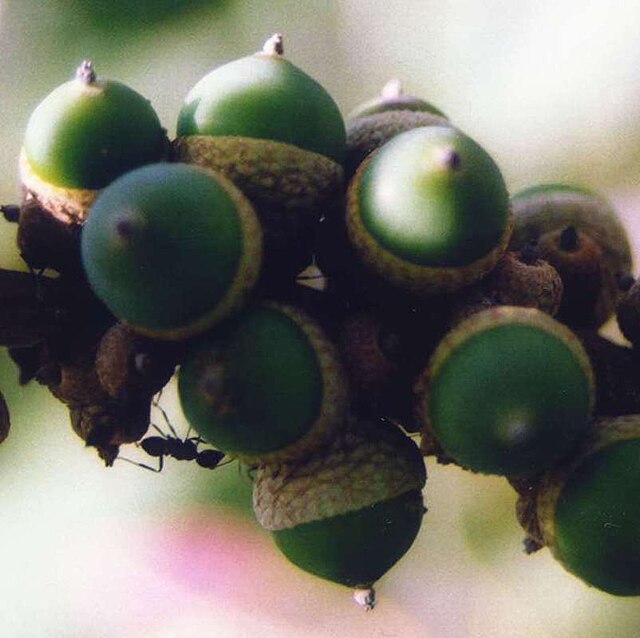Acorn
fruit/nut of the oak tree From Wikipedia, the free encyclopedia
Remove ads
The acorn is the fruit of the oak tree.[1] It is a nut, and has a single seed (rarely two seeds), enclosed in a tough, leathery shell. Acorns vary from 1 – 6 cm long and 0.8 – 4 cm broad. Acorns take between about 6 or 24 months (depending on the species) to mature.



Acorns are one of the most important wildlife foods in areas where oaks grow.[2] Creatures that make acorns an important part of their diet include birds, such as jays, pigeons, some ducks, and several species of woodpeckers. Small mammals that feed on acorns include mice, squirrels, and several other rodents. Such large mammals as pigs, bears, and deer also eat large amounts of acorns: they may constitute up to 25% of the diet of deer in the autumn.[3] In some of the large oak forests in southwest Europe, traditionally called "dehesas", pigs are still turned loose in oak groves in the autumn, to fill and fatten themselves on acorns.
Acorns contain tannins, which are toxic to some animals such as horses. The tannins can be soaked out, using water.
Remove ads
References
Other websites
Wikiwand - on
Seamless Wikipedia browsing. On steroids.
Remove ads
